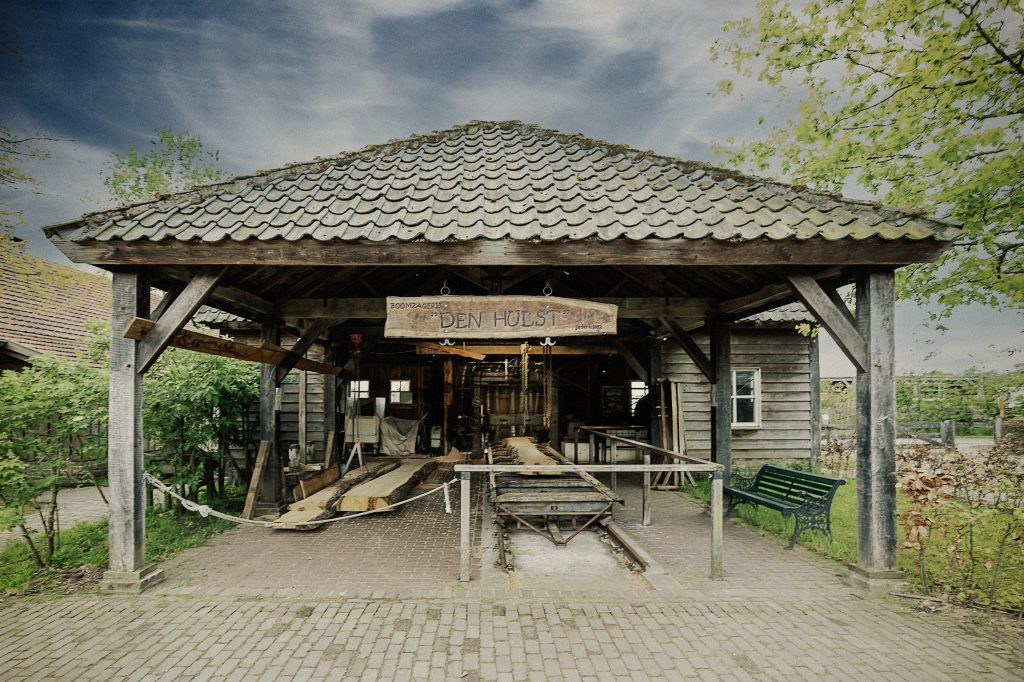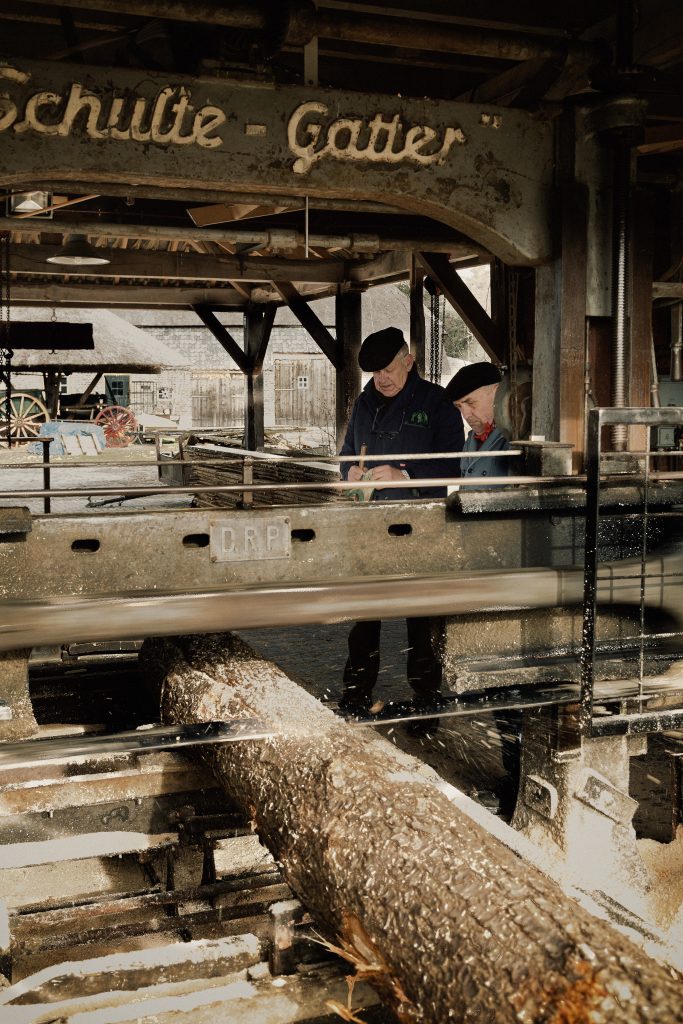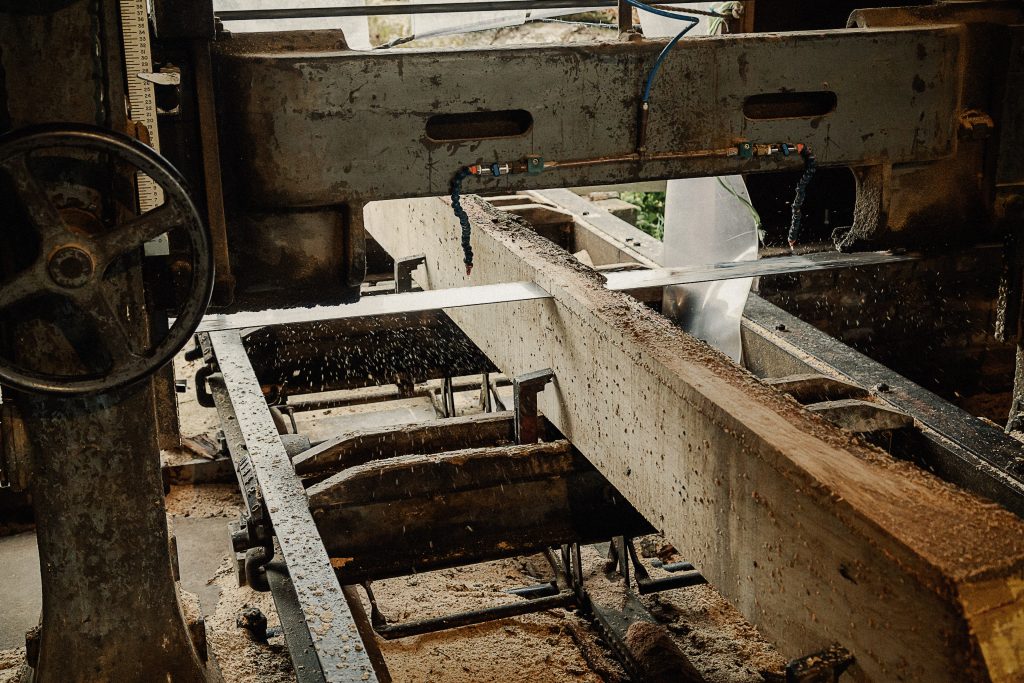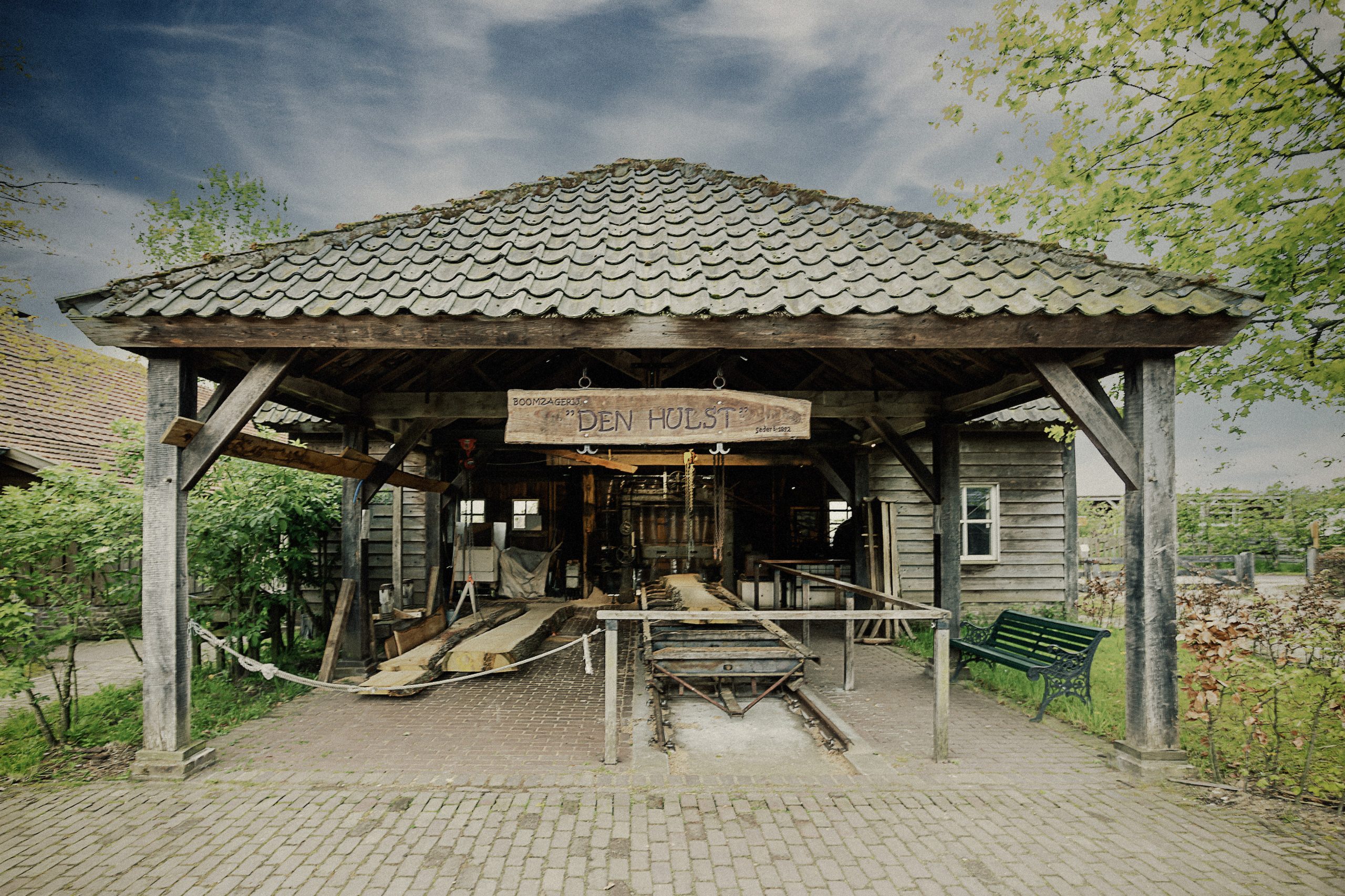
Tree trunk sawmill
In the early 1900s, log sawmills were large industrial complexes near water or rail for efficient timber logistics. Large saws in open buildings processed the logs, powered by steam engines. The wood was used for construction and furniture. The tree trunk sawmill at the Boerenbondsmuseum was built in 2016.
In the early 1900s, most of the log sawmills were sprawling industrial complexes located near waterways or railroad tracks to facilitate the logistics of the vast quantities of timber. They often contain large, open sawmill buildings with massive saws and conveyor belts. The typical image includes tall piles of logs waiting to be processed, and mountains of sawn timber ready for distribution.
The operation of a log sawmill in the early 1900s relied heavily on both human labor and machine power. Logs were taken to the sawmill (often floating by waterways or by train), where they were first sorted according to size and quality. They were then led to the sawing machines where large circular saws or band saws cut them into planks, beams, or other shapes. These engines were usually powered by steam engines, which was a revolutionary advance over the hand-operated saws of earlier times. Workers in the sawmill took care of the operation of the machines and the sorting and stacking of the sawn timber.
How does the tree trunk sawmill work?
The log sawmill works as follows: The tree is placed on the train (wagon that runs on a rail) and clamped with the collets. The train (car) is automatically driven slowly to the saw by the sawing machine via a cogwheel wheel. After the saw is set, the machine is put into operation and beams or planks are cut out of the tree.
The wood produced in sawmills had numerous uses. In an era of rapid urban and rural development, much of the wood was used for the construction of homes, commercial buildings, and infrastructure such as bridges and railways. Wood was also a crucial material for the manufacture of furniture, doors, flooring, and other household products.

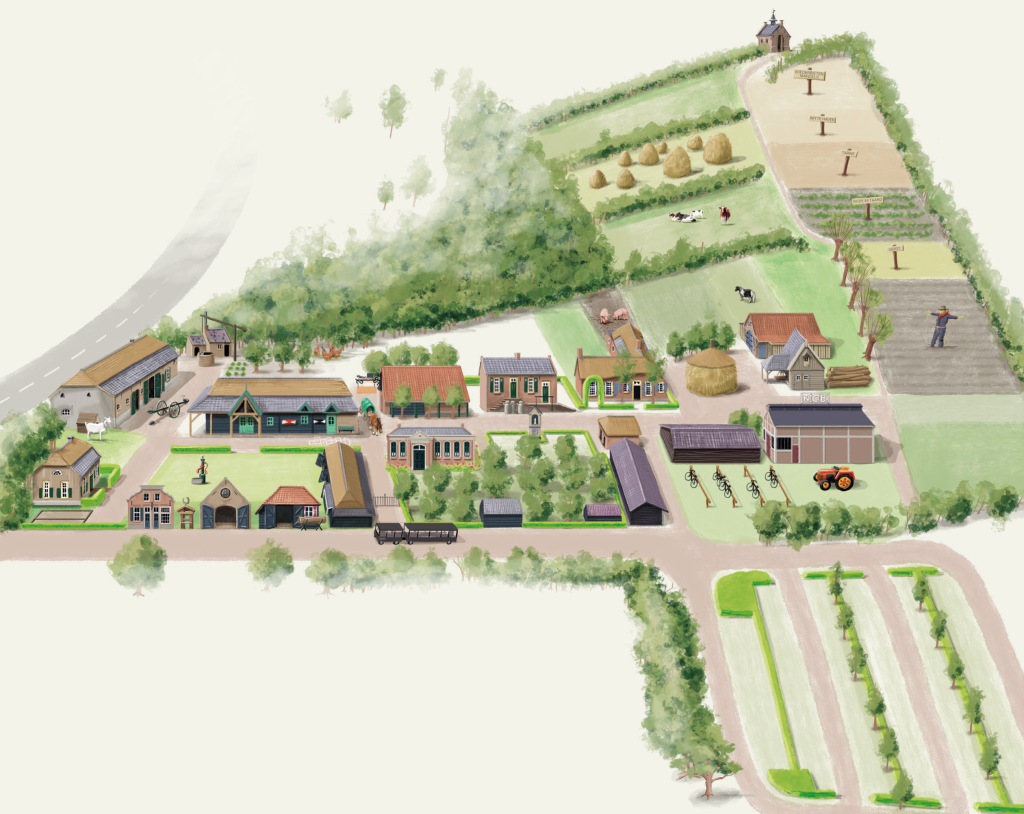
Discover more of the museum
The tree trunk sawmill at the Boerenbondsmuseum
The tree trunk sawmill was built in 2016 and consists of a stone substructure with pot-lidded walls on top. This means that the planks are shingled. This method of construction was characteristic of sawmills.
The sawing machine is of German manufacture of the brand Schulte Gatter from 1935 and belongs to the type of flat sawing or horizontal sawing. Flat saws always work with one saw. It is powered by an electric motor. At the time, this sawing machine was purchased from the manufacturer by sawmill Lammerink from Marle, a small village near Hellendoorn. From 1935 until the late 1960s, the saw was in operation there.

